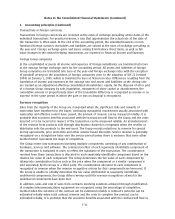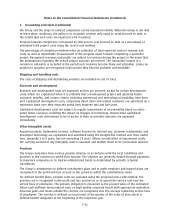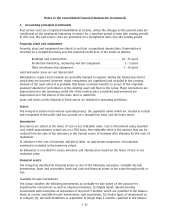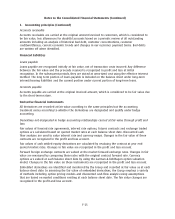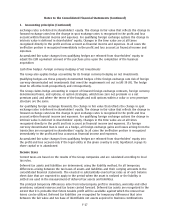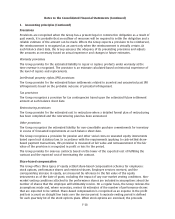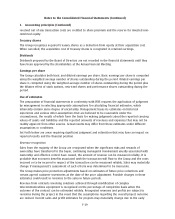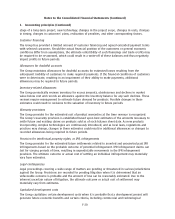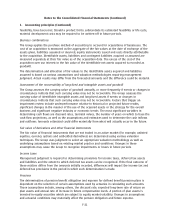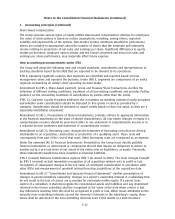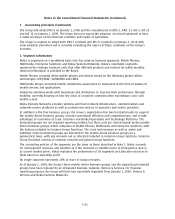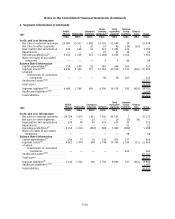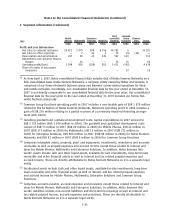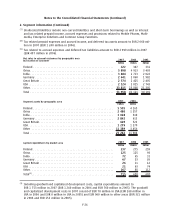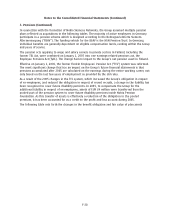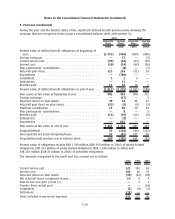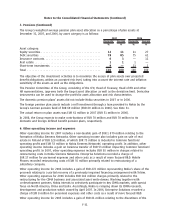Nokia 2007 Annual Report Download - page 164
Download and view the complete annual report
Please find page 164 of the 2007 Nokia annual report below. You can navigate through the pages in the report by either clicking on the pages listed below, or by using the keyword search tool below to find specific information within the annual report.1. Accounting principles (Continued)
feasibility, have been met. Should a product fail to substantiate its estimated feasibility or life cycle,
material development costs may be required to be writtenoff in future periods.
Business combinations
The Group applies the purchase method of accounting to account for acquisitions of businesses. The
cost of an acquisition is measured as the aggregate of the fair values at the date of exchange of the
assets given, liabilities assumed or incurred, equity instruments issued and costs directly attributable
to the acquisition. Identifiable assets, liabilities and contingent liabilities acquired or assumed are
measured separately at their fair value as of the acquisition date. The excess of the cost of the
acquisition over our interest in the fair value of the identifiable net assets acquired is recorded as
goodwill.
The determination and allocation of fair values to the identifiable assets acquired and liabilities
assumed is based on various assumptions and valuation methodologies requiring management
judgment. Actual results may differ from the forecasted amounts and the difference could be material.
Assessment of the recoverability of longlived and intangible assets and goodwill
The Group assesses the carrying value of goodwill annually, or more frequently if events or changes in
circumstances indicate that such carrying value may not be recoverable. The Group assesses the
carrying value of identifiable intangible assets and longlived assets if events or changes in
circumstances indicate that such carrying value may not be recoverable. Factors that trigger an
impairment review include underperformance relative to historical or projected future results,
significant changes in the manner of the use of the acquired assets or the strategy for the overall
business and significant negative industry or economic trends. The most significant variables in
determining cash flows are discount rates, terminal values, the number of years on which to base the
cash flow projections, as well as the assumptions and estimates used to determine the cash inflows
and outflows. Amounts estimated could differ materially from what will actually occur in the future.
Fair value of derivatives and other financial instruments
The fair value of financial instruments that are not traded in an active market (for example, unlisted
equities, currency options and embedded derivatives) are determined using various valuation
techniques. The Group uses judgment to select an appropriate valuation methodology as well as
underlying assumptions based on existing market practice and conditions. Changes in these
assumptions may cause the Group to recognize impairments or losses in future periods.
Income taxes
Management judgment is required in determining provisions for income taxes, deferred tax assets
and liabilities and the extent to which deferred tax assets can be recognized. If the final outcome of
these matters differs from the amounts initially recorded, differences will impact the income tax and
deferred tax provisions in the period in which such determination is made.
Pensions
The determination of pension benefit obligation and expense for defined benefit pension plans is
dependent on the selection of certain assumptions used by actuaries in calculating such amounts.
Those assumptions include, among others, the discount rate, expected longterm rate of return on
plan assets and annual rate of increase in future compensation levels. A portion of plan assets is
invested in equity securities which are subject to equity market volatility. Changes in assumptions
and actuarial conditions may materially affect the pension obligation and future expense.
F21
Notes to the Consolidated Financial Statements (Continued)


